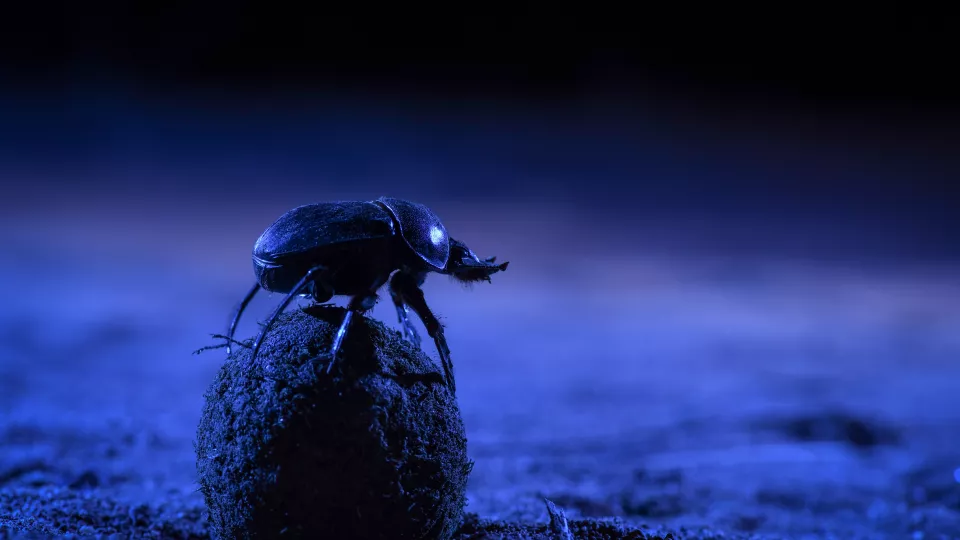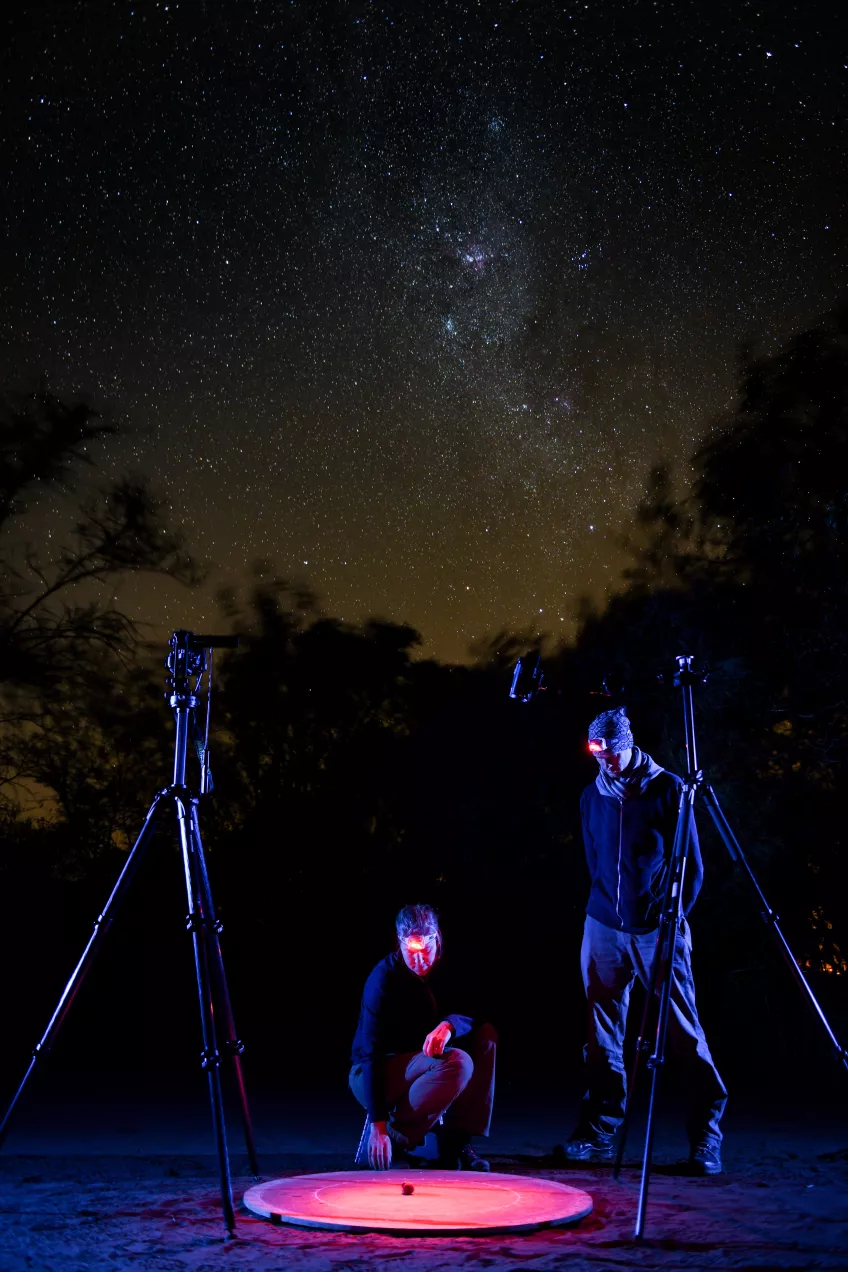There are advantages to being active in the night. Fewer parasites are active and the same goes for predators. What is more, there are not as many competitors for food as there are during the day. For animals that migrate or search for food over vast distances in particular, the cooler hours of the night are preferable to the heat of the sun.
A key requirement for nocturnal animals is that they can hold their course in the dark. Migrating birds that take off at sunset rely on their magnetic compass, but also the star compass when they use individual stars for orientation. Dung beetles do not use individual stars. Instead they travel through the night with the help of the light from the Milky Way, which contrasts to the surrounding dark sky.
Studies also support that seals, moths, frogs and other animals use the starry sky to navigate at night.
”Animals with camera eyes, the type of eyes that we humans possess, can discern individual stars. Insects with compound eyes most likely cannot, but we believe that they can interpret the starry sky and the Milky Way as patterns of light”, says James Foster, a biologist in the Faculty of Science at Lund University.
He has written a review article in Proceedings of the Royal Society B together with colleagues Marie Dacke, Dan-Eric Nilsson and Jochen Smolka. Their research addresses some exciting challenges.
”We still know very little about how nocturnal animals experience and interpret the night sky. For example, no one has yet determined whether, and how, migrating birds change their point of reference in the night sky when they pass the equator”, James Foster explains.
”I think emerging technologies, such as highly-sensitive cameras, will allow us to discover many more species that also use the starry skies to guide them during the darkest hours of the night.”
Publication: How animals follow the stars
Contact:
James Foster, Postdoc
Department of Biology, Lund University
+46 46 222 86 29
+46 72 840 77 81
james [dot] foster [at] biol [dot] lu [dot] se (james[dot]foster[at]biol[dot]lu[dot]se)

